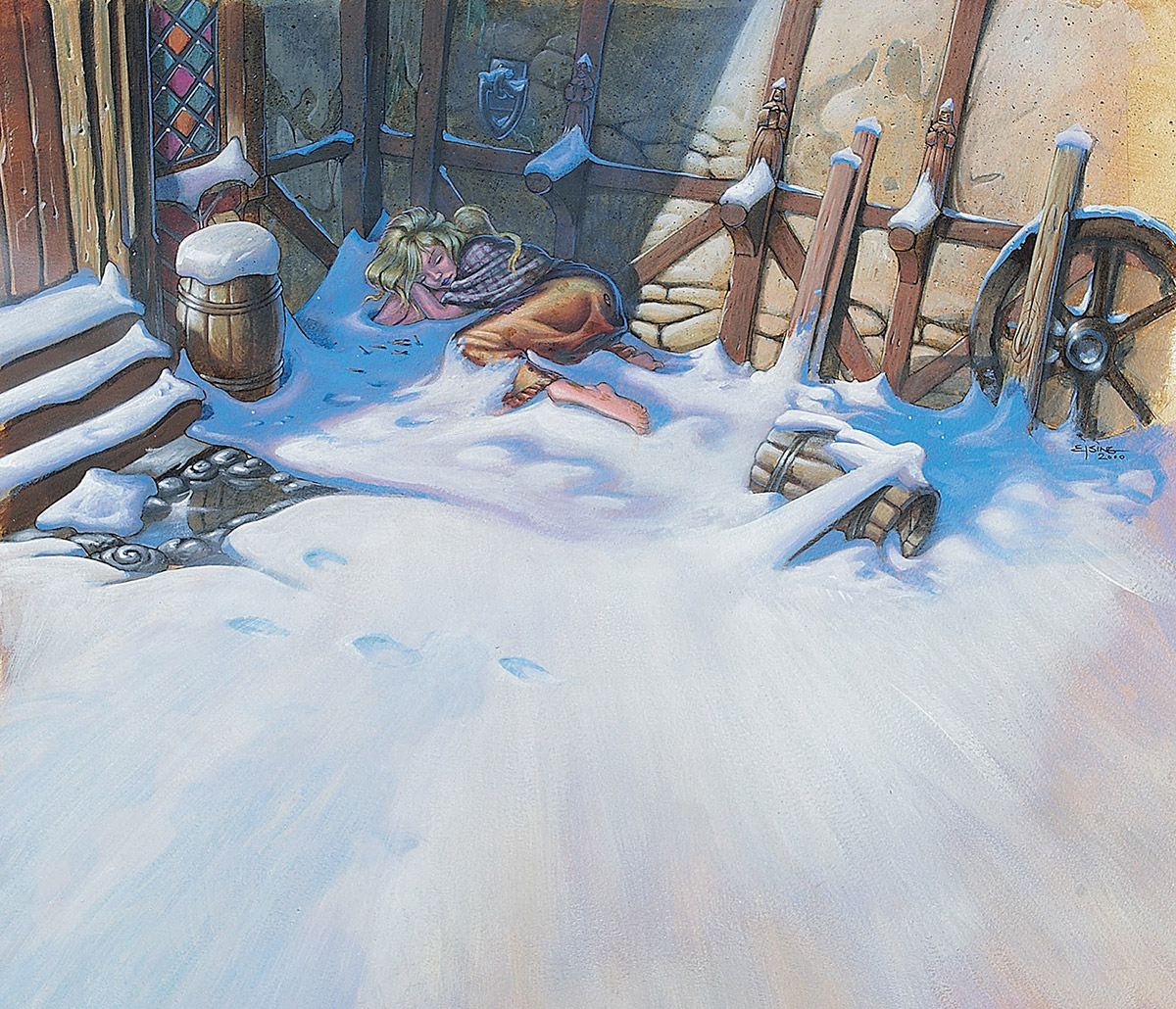 |
| One of my first acrylic paintings. For a fairy Tale by H. C. Andersen. |
When I was 21 and in the beginning of my career as an artist, I was still studying literature. On the side I was hanging around at a Studio ( the one I still reside in ) doing freelance work and dreaming about being a full time illustrator. I always imagined how sweet that life would be. I could spend all day carefully searching the royal library for references. I would study nature and paint puddles in the street or make sketches of statues and old buildings around Copenhagen. Everything would be satisfying and rewarding artistically and I could paint whatever I wanted, because my skills were just a year or two away of being polished to perfection. A couple of years later I was still happily learning something within each new painting. I was trying different styles and medium every week and I felt like I was almost up to level with Larry Elmore and Parkinson, my main inspirations back then.
As the years piled together I realised that this drawing-thing is super hard. Painting is even more difficult. I learned the hard way through coloring comics what colors to use and how to pair them together. I taught myself about light and reflections by looking at Richard Corben and a bunch of other artists. One day I read in a magazine called Duelist that Greg Staples, a magic artist, used acrylics and he was only a couple of years older than me. He did the cover of the magazine, and I totally lost my senses, got depressed and ready to fight at the same time. I LOVED everything about that illustration and I made up my mind: ‘Jesper; you have one and a half year to learn acrylic, If you don’t you will be older than Greg and it will all be over” (what an intelligent reasoning). I jumped in and have used that medium ever since.
But no matter how hard I trained myself, no matter how many other artist I studied and asked questions and how many books I read, and no matter how much better I became, it never got any easier. I just saw new problems ahead ( challenges, if you really wanna take on the positive hat ). When you improve, you just realise new aspects that can be better, or you suddenly discover that light is bouncing where you before only thought of cast shadows. Perhaps you start looking at the old masters ( never look at the old masters ) and it dawns on you how very far behind you are. I cried a little when I was standing in front of “Hip Hip Hurra” by P.S.Krøyer, knowing deep within my soul that I would never be able to paint like that no matter how hard I tried.
When you become better and you climb that next step of the skill ladder, you do not get to the top, you just get a little higher.
My point is: do not wait for a point in your life as an artist when everything becomes easier. It won’t. Embrace the fact that it is a hard struggle and it always will be. I am at a point where I am afraid for things to be too easy. “It is just because you are too stupid to see the problem, Jesper”, I say to myself. ‘Easy’ is for when you stall as an artist and you lose the ability to climb the next ladder.
What happens when you train yourself, is that some aspects of drawing becomes routine. At some point you do no longer sweat from nervousness when laying down paint on a figure. You build a visual vocabulary and all of a sudden you realise that some things have become easier. Tatadaaaa! time for celebration? Not really. What the newfound skill level does to you, is make room for something else. I remember when I felt that color choices were no longer something I dreaded or feared, instead I discovered that I was not portraying light at all. I was merely coloring my drawings like it was a panel in a comic book. I was in fact not “Painting “ I was coloring. Then I took it upon myself to study light and light sources and by looking at the Hildebrandt Brothers. I started abusing rim light to an extend that would embarrass even a disco dance floor.
Things get easier with routine and when you do something for a very long time, like painting acrylics every day for 15 years, there is a lot of stuff like applying paint and mixing colors that I take for granted and do not invest a lot of sweat and tears over. When I one day out of the blue did the exact right series of careless brush strokes that made dragon skin texture look just right and with a hint of Paul Bonner, I layed down the brush and thought about what happened. What I just did, I wasn´t able to do just 10 minutes ago.What had changed? Nothing really. Except the fact that I somehow build up enough routine and secureness in drawing, color and composition so that my mind was open and ready for the next step. When I finally relaxed a little and did not obsess over everything I could let new skills in.
This last year I have been looking a lot at museums and old masters like P. S Krøyer ( always look at the old Masters ) and I can see how much too dark I have been painting skin tones. I think I am at place where I will concentrate on skin tones for a while, building up my visual vocabulary of that. Fortunately I have a large collection of books with women dressed in very little bathing suits, that allows for large areas of skin tones to be studied.
So when you struggle like crazy and you know that you can do better, but just have a hard time climbing that next step, embrace the fact that some things will be easier. And when it does, concentrate on the next difficult part.
I will finish, with my favorite quote from Mr. Angus Mcbride:
“If you look back on last years work and you still like it: you are slipping.”


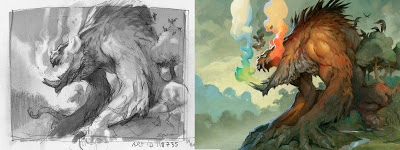
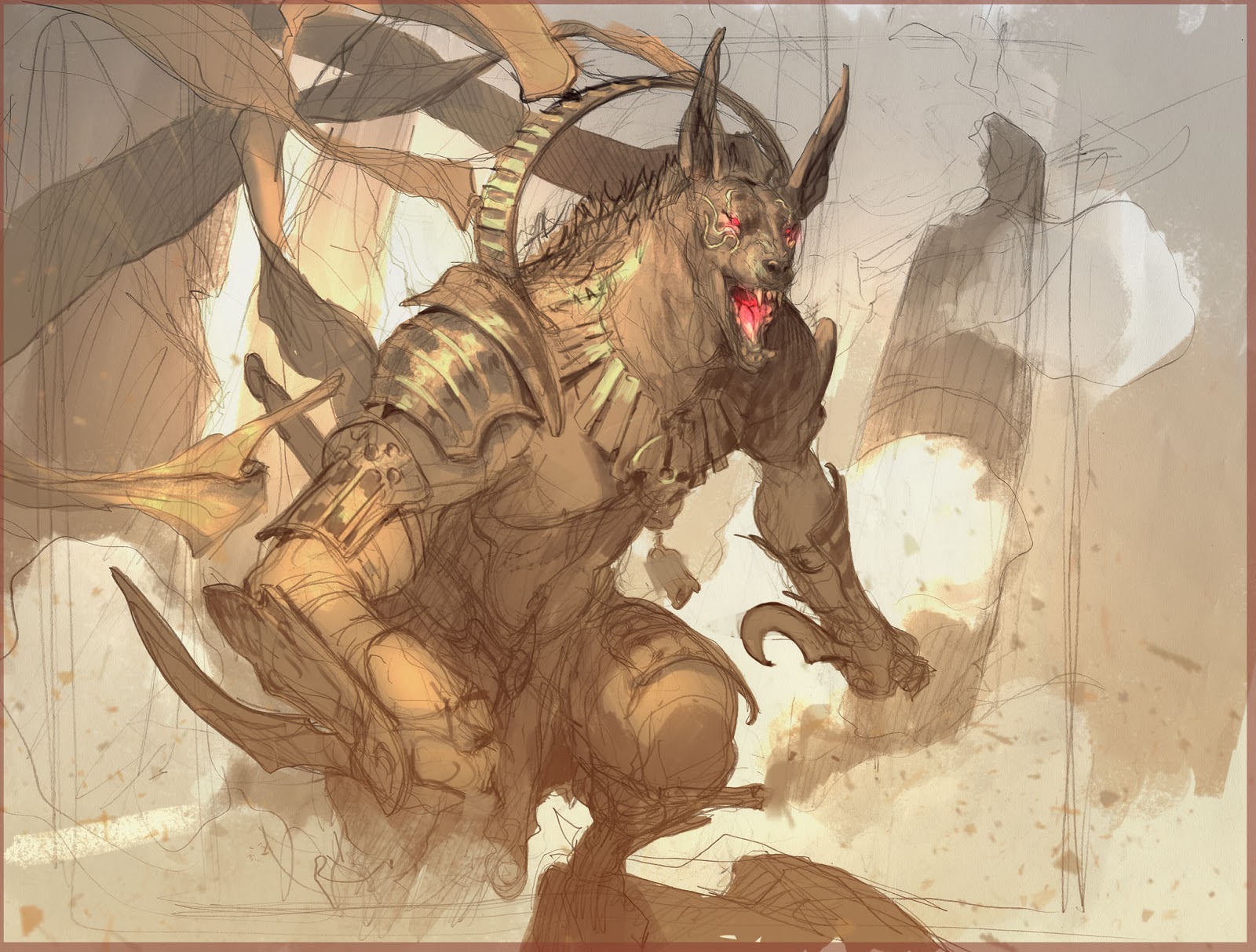
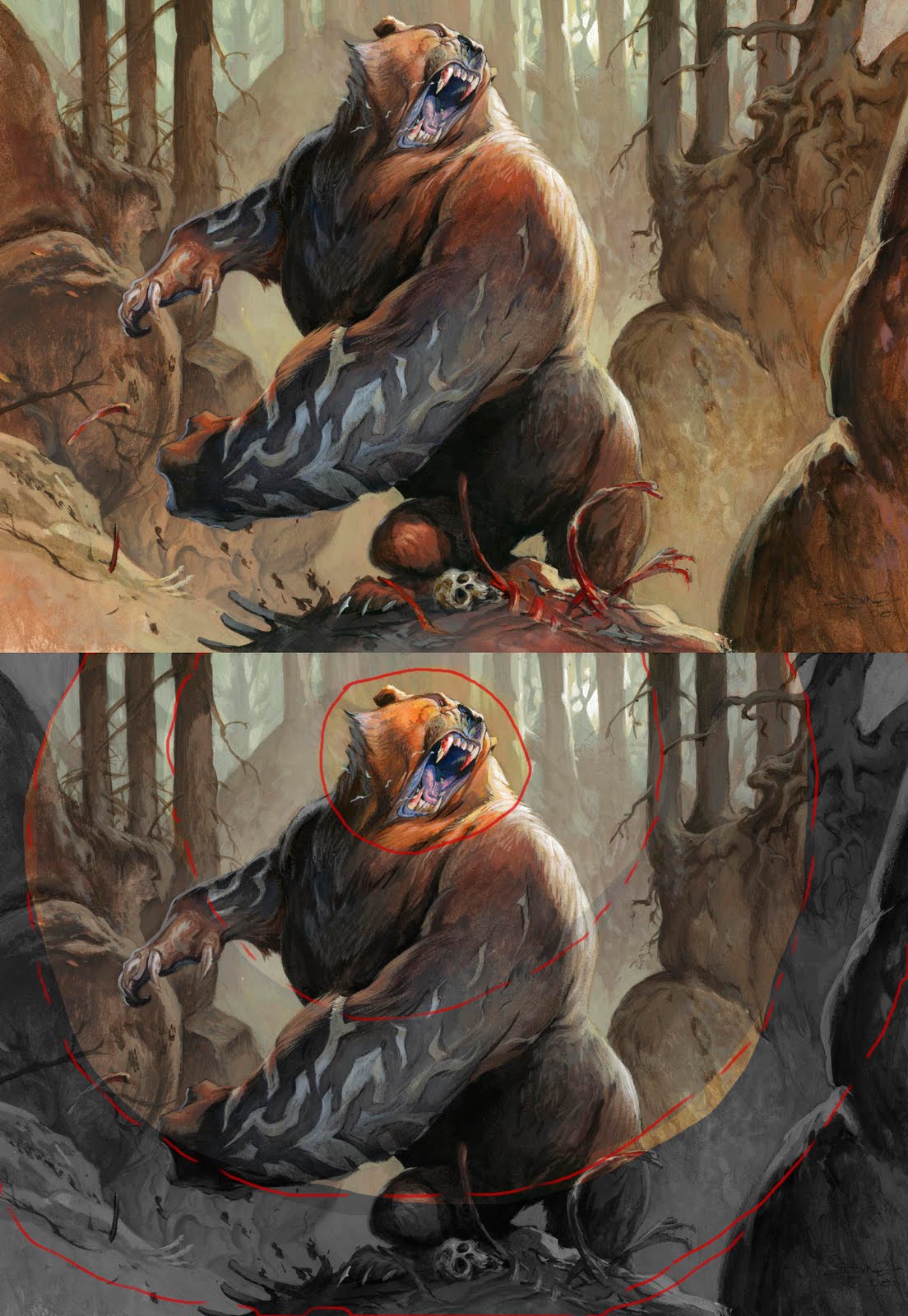
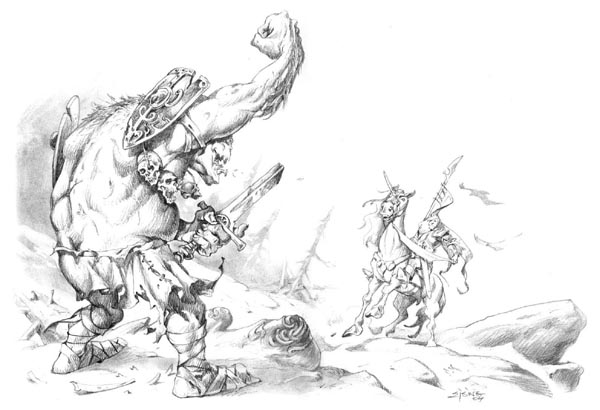
Love this post. I agree 1000%.
A very profound post, thank you for sharing Jesper!
This is really inspiring. Thank you so much for sharing Jesper. As an art student I defiantly have that hope, that one day it won't be hard anymore. But I suppose that would get rid of the thrill at the end, where you realize you just climbed the next mountain, even if you find a sea on hills waiting at the top.
Very inspiring!
You describe exactly the way I feel. Every day I feel as if I conquer something, and yet at the same time I realize how much I have yet to learn. And learning never ends
Excellent advice Jesper. Thank you for this. Just what I needed to hear today.
It's really comforting to hear these words from a top artist. Nice to know that we are all in the same boat.
I find it that, for periodes 1-2 years I don't feel any advancentment, but then all of the sudden, bang! The improvement just comes witin a second. It's not at progessive feeling where you can feel you get better from every drawing. Knowing that makes me relax when a long period has passed, without improvement.
mildly perturbed and very reassured at the same time by this. thank you for putting it down in writing
Awesome post, I feel the same way. I look at all the people admire and think I have to out do them by time I'm their age and think it will be as easy as it looks when I get there… So no true, never gets easy and you won't reach that point unless you start layin down paint or pencil or pixels and make it happen.
Excellent post! I go through periods of lament where I think “it shouldn't be this hard” but happily, once I snap out of that, I am always motivated to learn more and work harder. It is good to hear you express similar feelings. 🙂 I suppose that if I ever think it is getting easy, then I am not trying to improve, or as McBride said, “slipping.” Keep aiming for Krøyer!
Jesper, thank you! I would say this was a good timing 🙂
i needed that….
Thank you very much and seriously it's very good timing for me 🙂
Inspiring!
thank you for the encouragement and reality check.
also, thanks for the process demo.
i work in acrylic,mainly, and have been “losing” my drawing with the initial
wash. ive used the inking technique and it works great!
That painter who has no doubts will achieve little. (Leonardo da Vinci)
I laughed when you were 21 and your like” I only have a year and half to learn acrylics.” That basically sums up my experience that I am having right now. I'm 21, well 22 in 2 days, and The other day I was looking at an artist who was a little older than me, and I basically said the same thing. I only have a year to paint better then him. lol. But, awesome, post really helped a ton.